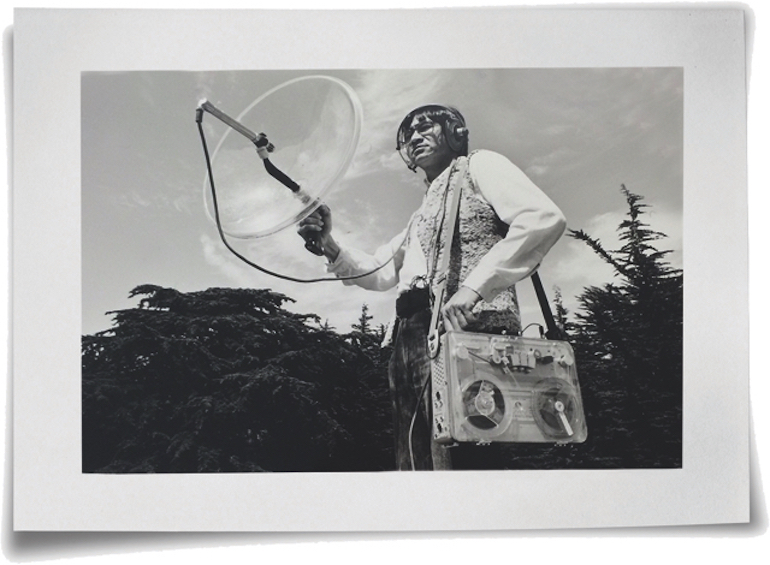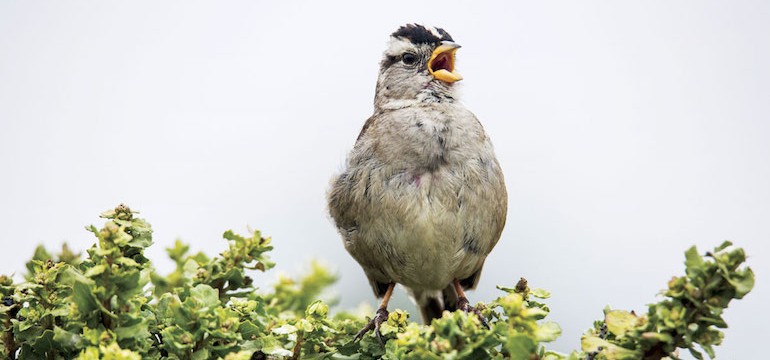The Language of Sparrows (Or How Bird Songs Are Evolving To Compete With Urban Noise) by Kim Todd
Lobos Creek trailhead in the Presidio looks wild. Flushed orange monkey flower, sage, and coyote bush spill over re-created sand dunes. Nearby, the creek empties into the ocean. But close your eyes. A water truck pulls up to a stop sign with a mechanical whine. Car engines growl, foghorns moan, a distant airplane whirs. The noise, which never stops even though it’s barely 7 a.m., makes it clear you’re in the middle of the city.
In the parking lot, a white-crowned sparrow perches at the top of an evergreen tree next to a pickup truck and sings, launching a quick patter: whistle, buzz, two-part trill, and a scattering of notes. It’s music familiar to city dwellers, even if they couldn’t name it. The song is key to the white crown’s survival, helping him attract a mate and defend the territory around his nest, warning off other males with his vocal vigor. But the notes are almost drowned out as a bus sighs to a halt. Thanks to recent restoration efforts, the bird is surrounded by plants, such as lupine, that evolved here over centuries, along with the sparrow. But there is no restoring the silence, and the noise grows year by year. What will it take for white crowns like this one to survive in this new soundscape? What will it take to be heard?






Leave a Reply
Lo siento, debes estar conectado para publicar un comentario.